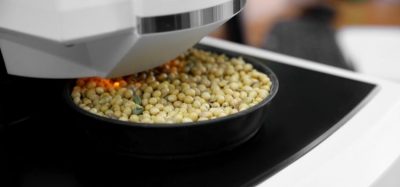Ensuring the quality of ice cream
- Like
- Digg
- Del
- Tumblr
- VKontakte
- Buffer
- Love This
- Odnoklassniki
- Meneame
- Blogger
- Amazon
- Yahoo Mail
- Gmail
- AOL
- Newsvine
- HackerNews
- Evernote
- MySpace
- Mail.ru
- Viadeo
- Line
- Comments
- Yummly
- SMS
- Viber
- Telegram
- Subscribe
- Skype
- Facebook Messenger
- Kakao
- LiveJournal
- Yammer
- Edgar
- Fintel
- Mix
- Instapaper
- Copy Link
Posted: 11 August 2006 | Chris Ing, Quality Assurance Manager, Wall’s UK | No comments yet
All year we look forward with anticipation to the summer; when the days are longer and warmer and we can enjoy a long-awaited holiday in the sun. Throughout Europe each region enjoys its own celebration of the season with barbeques, chilled drinks by the sea and picnics with friends, but a universal symbol of summer – and a food that is enjoyed the world over – is ice cream. Though advances have been made in formulations, ingredients and manufacturing equipment, product quality – as ever – must remain constant. But how is this ensured? New Food spoke with Chris Ing, Quality Assurance Manager at Wall’s in the UK to find out.
All year we look forward with anticipation to the summer; when the days are longer and warmer and we can enjoy a long-awaited holiday in the sun. Throughout Europe each region enjoys its own celebration of the season with barbeques, chilled drinks by the sea and picnics with friends, but a universal symbol of summer – and a food that is enjoyed the world over – is ice cream. Though advances have been made in formulations, ingredients and manufacturing equipment, product quality – as ever – must remain constant. But how is this ensured? New Food spoke with Chris Ing, Quality Assurance Manager at Wall’s in the UK to find out.
All year we look forward with anticipation to the summer; when the days are longer and warmer and we can enjoy a long-awaited holiday in the sun. Throughout Europe each region enjoys its own celebration of the season with barbeques, chilled drinks by the sea and picnics with friends, but a universal symbol of summer – and a food that is enjoyed the world over – is ice cream. Though advances have been made in formulations, ingredients and manufacturing equipment, product quality – as ever – must remain constant. But how is this ensured? New Food spoke with Chris Ing, Quality Assurance Manager at Wall’s in the UK to find out.
As one of Unilever’s leading brands Wall’s ice cream is constantly evolving and adapting to the tastes of consumers. Some of its best known products include Magnum, Cornetto, Ben & Jerry’s and Carte d’Or but recent changes include lighter versions, smaller sizes (for smaller appetites) as well as bringing some old favourites back into production. At the company’s manufacturing site in Gloucester, UK, quality assurance is taken very seriously: “We have 12 people altogether (working in the Quality Control department), which is probably quite typical for a food factory of our size,” (total number of employees is approximately 450). However, the necessary quality checks are not made by the team itself: “Virtually all of the QC/QA checks on production lines are carried out by production operators rather than by dedicated QA staff,” explains Ing.
So what does the team do?
“HACCP (Hazard Analysis and Critical Control Point) and its day to day implications is a major part of the QA role,” answers Ing, “and, in fact, this is growing rather than diminishing.” But what are the Critical Control Points (CCPs) in the ice cream production process?
“We define 13 CCPs,” explains Ing. “The key ones are related to time/temperature controls on ingredients, pasteurisation of the ice cream mix, and foreign body detection of finished products.”
In fact HACCP is a key focus of any consumer product manufacturing plant and, of course, ice cream production is no exception, but what are the other major quality standards that impact the job of a QA Manager?
“We operate within an ISO9001 Quality Management System framework,” says Ing. “Although, clearly, our standards must meet the requirements of UK and EU Food Safety regulations and of Trading Standards too.” Obviously the task of ‘quality control’ is wide-ranging and encompasses the monitoring of a huge number of controls: “too many to enumerate, really!” exclaims Ing. “But key areas are positive release of ice cream mix after testing for analytical parameters; on-line checks on conformance of products with their specifications for appearance, volume, weight, taste etc. as well as microbiological checks on product prior to their release for sale.”
Safety and hygiene
These considerations are integral to both the national and EU standards that food producers must adhere to, as Chris Ing confirms: “The key checks are of course related to the HACCP Plan – for example, swab checks to demonstrate cleanliness of the equipment and manufacturing environment; microbiological analysis of the ice-cream mix after pasteurisation, and ‘pre-flight checks’ on production lines to ensure zero foreign body contamination. The full range of planned maintenance routines falls into this category too.”
Quality assurance is clearly a series of checks on everything from cleanliness and safety of the processing equipment through to final checks on the finished products before they leave the plant. Ing explains what tests are carried out at this point: “We check each production batch for indicator organisms, plus very regular checks for pathogenic bacteria.”
But are similar tests carried out on incoming product, i.e. ingredients?
“We have some intake testing, but the key control in our HACCP plan lies in using only approved suppliers, with whom we are in very regular contact and whose quality systems and GMP conformance we audit on a systematic basis.” Careful selection and regular monitoring of suppliers ensures they always know exactly what they’re getting and – to a certain extent – negates the need to carry out further checks before processing. The important thing is that Wall’s ensure full traceability. “Yes, from ingredient batches through to the individual consumer product on the supermarket shelf, everything can be traced.”
Room for improvement
Clearly, with processing on such a large scale as the Wall’s plant, much of the work is automated. But this does not apply to the QA procedures. “We have very little automation,” confides Ing. “I would like to be able to capture QA data automatically from its source, but at present we have not installed this facility. We still have far too much keying data into spreadsheets.”
However, there is an ongoing attempt to improve processes within the plant: “We use a very helpful system called TPM to ensure that the continuous improvement process is permanently in operation. TPM delivers a systematic approach to controls, problem solving and improvements which can be applied in a very uniform way across all aspects of our operations. Of course, we are by no means perfect, but this is a way of making sure that we are always striving to get better and have the right tools in place to enable us to do so.”
It seems we can continue to enjoy the delights of the creamy iced confection with peace of mind – and a little insight into the process that keeps it safe.









